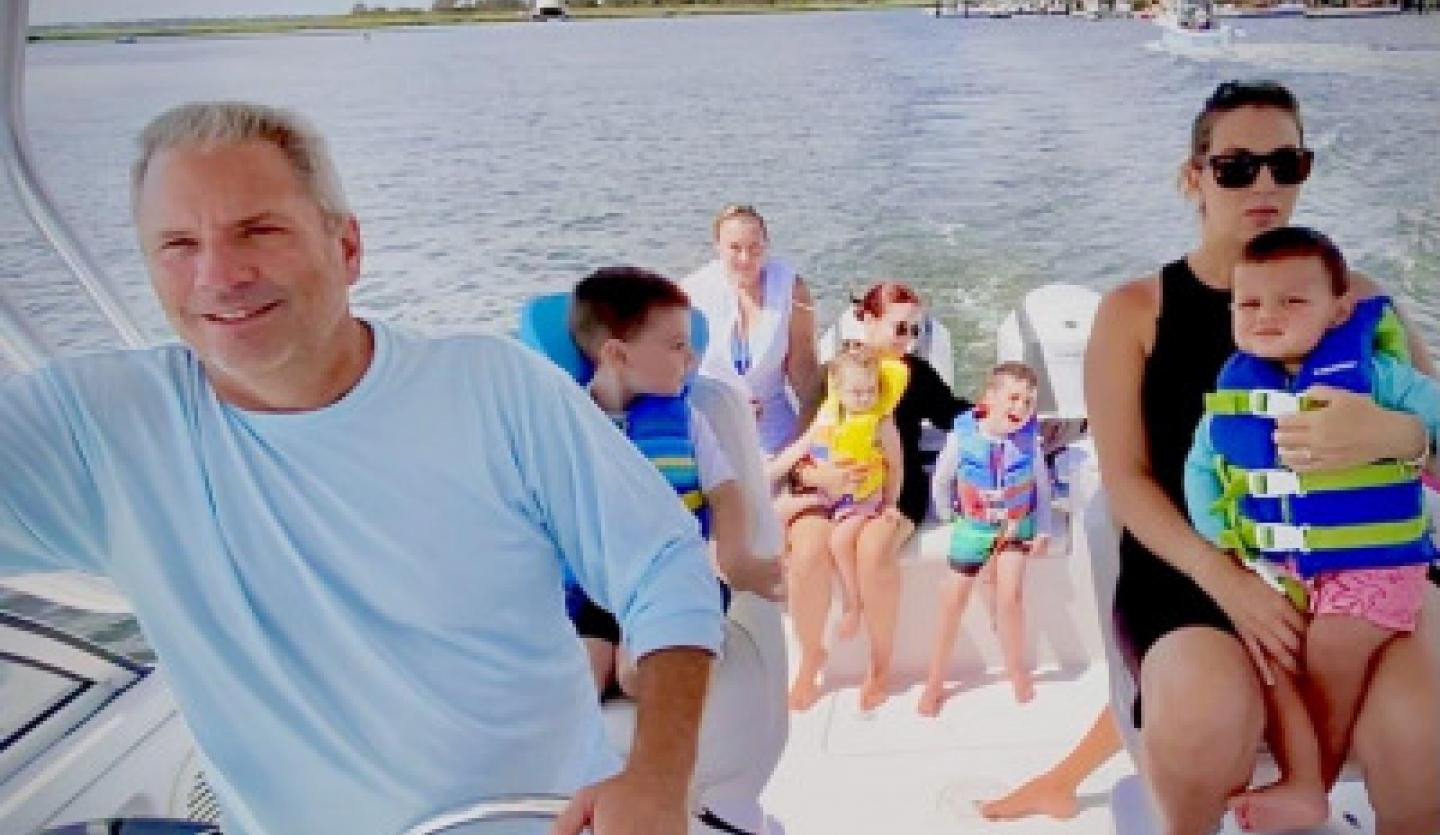Robots, cryogenics…Leonard Masi’s recent health care experience sounds like something straight out of science fiction. At Good Samaritan Hospital, these advanced techniques are part of the routine standard of care for the kidney tumors that Mr. Masi developed over the past year.
Kidney tumors affect men slightly more often than women, according to Christopher Atalla, DO, urologist at Good Samaritan, and are usually seen in those over the age of 40. In most cases, these tumors cause no symptoms, and are diagnosed incidentally during examinations focused on other issues. In this regard, Mr. Masi’s case was unusual.
At the end of a typical day working from home in the early part of the Covid-19 pandemic, Mr. Masi, 57, went to the restroom. Shockingly, his urine was filled with blood. As the evening wore on, he began to experience severe pain. He suspected a kidney stone, but his adult daughter, who had previously suffered from kidney stones, feared something more serious. She and Mr. Masi’s wife, Nancy, contacted Dr. Atalla, who arranged for a CT scan and an office visit.
The scan revealed a 3.3 cm tumor in Mr. Masi’s right kidney.
The good news is that surgery is often the only treatment required for kidney tumors. Large tumors and those that are difficult to reach may require removal of the entire kidney, but smaller tumors like Mr. Masi’s can often be removed while leaving the kidney intact. At Good Samaritan, Dr. Atalla had the option to use DaVinci® Robotic-assisted surgery to perform the procedure, called a partial nephrectomy. Dr. Atalla is one of the most experienced robotic-assisted surgeons in the area. His training, in addition to a five year urology residency, included a one year robotic and urologic oncology fellowship in Minneapolis and he has performed a high volume of robotic-assisted procedures.
For appropriate candidates, robotic-assisted surgery offers a higher degree of surgical precision, smaller incisions, less blood loss and a quicker recover time when compared to standard surgery or even non-robotic, minimally invasive laparoscopic approaches.
“The CT scan shows us the size and location of the tumor and indicates whether partial nephrectomy is feasible,” said Dr. Atalla.
Because his tumor was relatively small and accessible, Mr. Masi was an excellent candidate for robotic-assisted surgery, a minimally invasive procedure that provides the surgeon with access to the kidneys via a series of tiny abdominal incisions. It is performed with Dr. Atalla at a console which offers three-dimensional, high-definition views of the surgical field magnified to 10 times what the unaided human eye can see. From the console, Dr. Atalla manipulates tiny surgical instruments that have far greater range of motion and precision than human hands. Ultrasound guidance helps him visualize the surgical field and ensures that he is able to remove the entire tumor while preserving healthy kidney tissue.
“My biggest worry going into surgery was the possibility of losing my kidney,” Mr. Masi said. “The best news I heard when they woke me up was that they did not have to take my kidney out.”
Mr. Masi was one of the first patients to undergo robotic surgery at Good Sam after Covid-19 forced the cancellation of many procedures. The pandemic meant he was unable to have visitors for the four days he spent recovering in the hospital. Within two weeks of returning home, he felt well enough to return to his normal activities.
Unfortunately, this was not the end of Mr. Masi’s ordeal. Earlier this year, he began experiencing symptoms again and returned to Dr. Atalla. Another round of scans revealed another tumor, much smaller this time, on his left kidney.
This time, due to the location of this new tumor Dr. Atalla elected to have this tumor treated in a different manner: cryoablation, which essentially freezes the malignancy. As a cryogenic control and instrumentation supervisor at Brookhaven National Laboratory, Mr. Masi had some insight into what to expect from the cryoablation procedure.
Using CT guidance, three cryogenic probes that resemble meat thermometers were precisely placed around the tumor. Different patterns of extremely low temperatures were used to freeze the malignancy. The probes were removed, and after a short stay in recovery, Mr. Masi was discharged home.
“They tell you that in two weeks you may have flu like symptoms, and that is exactly what I experienced,” Mr. Masi said. These symptoms coincide with the body’s response to the tumor dying.
While his medical procedures may sound like science fiction, Mr. Masi’s passions are much more down-to-earth. An avid outdoorsman, Mr. Masi is back to enjoying the activities he loves: boating, fishing, hunting, riding ATVs, and spending time with his wife, three grown daughters and six grandchildren.
“I’m doing what I normally do to keep a positive mind,” he said. “You move forward and keep going.”
Mr. Masi will require close monitoring by Dr. Atalla going forward. But he doesn’t mind; he considers Dr. Atalla more than his healthcare provider.
“When I go see him it’s like going to see a friend,” Mr. Masi said. “He is fantastic. It’s the best relationship I’ve ever had with any doctor. When I was going through this, he gave me his cell phone number and said, ‘Just call me.’”

